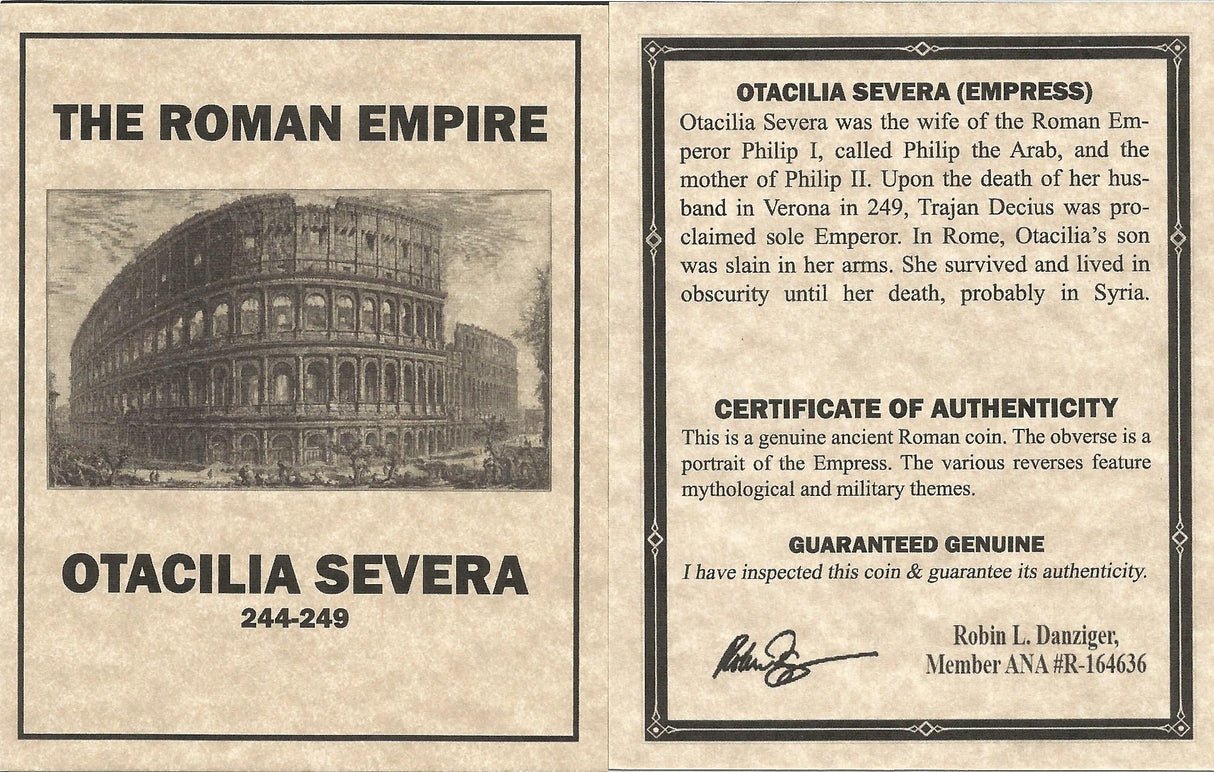 Image 1 of 2
Image 1 of 2

 Image 2 of 2
Image 2 of 2



Anonymous Roman Provincial Bronze Unit from Pergamum (1,970 years ago)
This bronze coin was minted in Pergamum, Mysia (modern-day Bergama, Turkey) between 40-60 AD during the early Roman Imperial period. It represents provincial coinage issued under Roman authority but with local designs.
Coin Description:
Front side: Draped bust of the personified Roman Senate facing right, surrounded by a line border.
Back side: Turreted and draped bust of Roma (the personification of Rome) in profile, facing right.
Technical Details:
Material: Bronze
Denomination: Provincial Unit
Size: 18mm diameter
Weight: 3 grams
Period: 40-60 AD (Early Roman Imperial period)
Mint: Pergamum, Mysia
Catalog Reference: RPC 2374
Historical Significance:
This anonymous provincial issue represents Rome's flexible approach to local governance during the early empire, allowing cities like Pergamum to mint their own coinage while acknowledging Roman authority. The personifications of both the Senate and Roma demonstrate how Roman imperial ideology was projected into the eastern provinces. Pergamum was a major cultural and administrative center in Roman Asia Minor, having previously been the capital of the Attalid Kingdom before its incorporation into the Roman provincial system, and this coinage reflects its continued importance under Roman rule in what is now western Turkey.
This bronze coin was minted in Pergamum, Mysia (modern-day Bergama, Turkey) between 40-60 AD during the early Roman Imperial period. It represents provincial coinage issued under Roman authority but with local designs.
Coin Description:
Front side: Draped bust of the personified Roman Senate facing right, surrounded by a line border.
Back side: Turreted and draped bust of Roma (the personification of Rome) in profile, facing right.
Technical Details:
Material: Bronze
Denomination: Provincial Unit
Size: 18mm diameter
Weight: 3 grams
Period: 40-60 AD (Early Roman Imperial period)
Mint: Pergamum, Mysia
Catalog Reference: RPC 2374
Historical Significance:
This anonymous provincial issue represents Rome's flexible approach to local governance during the early empire, allowing cities like Pergamum to mint their own coinage while acknowledging Roman authority. The personifications of both the Senate and Roma demonstrate how Roman imperial ideology was projected into the eastern provinces. Pergamum was a major cultural and administrative center in Roman Asia Minor, having previously been the capital of the Attalid Kingdom before its incorporation into the Roman provincial system, and this coinage reflects its continued importance under Roman rule in what is now western Turkey.
This bronze coin was minted in Pergamum, Mysia (modern-day Bergama, Turkey) between 40-60 AD during the early Roman Imperial period. It represents provincial coinage issued under Roman authority but with local designs.
Coin Description:
Front side: Draped bust of the personified Roman Senate facing right, surrounded by a line border.
Back side: Turreted and draped bust of Roma (the personification of Rome) in profile, facing right.
Technical Details:
Material: Bronze
Denomination: Provincial Unit
Size: 18mm diameter
Weight: 3 grams
Period: 40-60 AD (Early Roman Imperial period)
Mint: Pergamum, Mysia
Catalog Reference: RPC 2374
Historical Significance:
This anonymous provincial issue represents Rome's flexible approach to local governance during the early empire, allowing cities like Pergamum to mint their own coinage while acknowledging Roman authority. The personifications of both the Senate and Roma demonstrate how Roman imperial ideology was projected into the eastern provinces. Pergamum was a major cultural and administrative center in Roman Asia Minor, having previously been the capital of the Attalid Kingdom before its incorporation into the Roman provincial system, and this coinage reflects its continued importance under Roman rule in what is now western Turkey.
Mysia (UK /ˈmɪsiə/, US /ˈmɪʒə/ or /ˈmiːʒə/; Greek: Μυσία; Latin: Mysia; Turkish: Misya) was a region in the northwest of ancient Asia Minor[1] (Anatolia, Asian part of modern Turkey). It was located on the south coast of the Sea of Marmara. It was bounded by Bithynia on the east, Phrygia on the southeast, Lydia on the south, Aeolis on the southwest, Troad on the west, and the Propontis on the north. In ancient times it was inhabited by the Mysians, Phrygians, Aeolian Greeks and other groups.
The precise limits of Mysia are difficult to assign. The Phrygian frontier was fluctuating, while in the northwest the Troad was only sometimes included in Mysia.[1] The northern portion was known as "Lesser Phrygia" or (Ancient Greek: μικρὰ Φρυγία, romanized: mikra Phrygia; Latin: Phrygia Minor), while the southern was called "Greater Phrygia" or "Pergamene Phrygia". Mysia was in later times also known as Hellespontine Phrygia (Ancient Greek: Ἑλλησποντιακὴ Φρυγία, romanized: Hellespontiake Phrygia; Latin: Phrygia Hellespontica) or "Acquired Phrygia" (Ancient Greek: ἐπίκτητος Φρυγία, romanized: epiktetos Phrygia; Latin: Phrygia Epictetus), so named when the region was annexed to the Attalid kingdom.[2]
Under Augustus, Mysia occupied the whole of the northwest corner of Asia Minor, between the Hellespont and the Propontis to the north, Bithynia and Phrygia to the east, Lydia to the south, and the Aegean Sea to the west.[3]
























